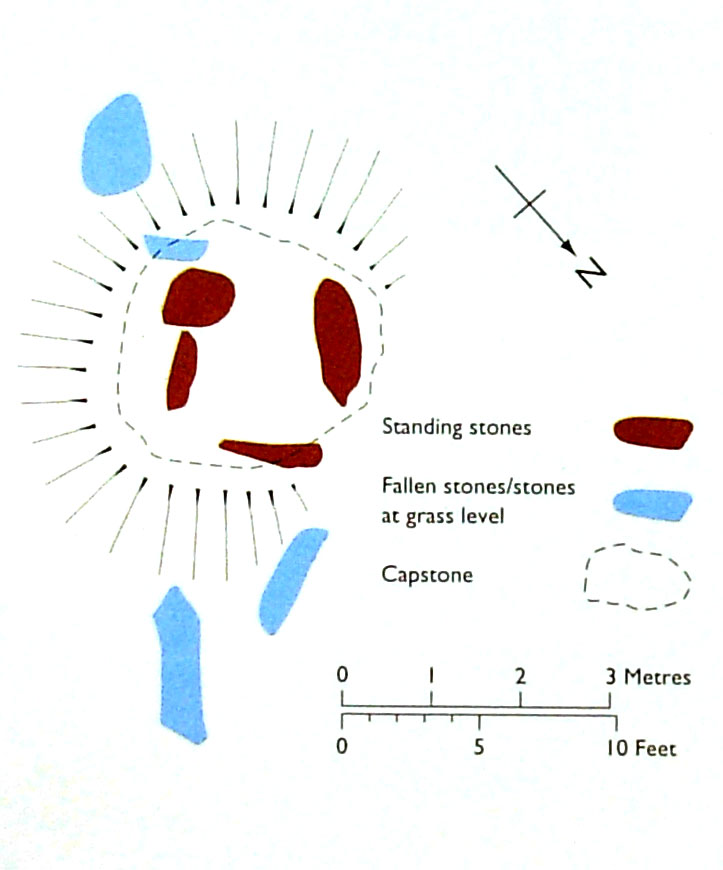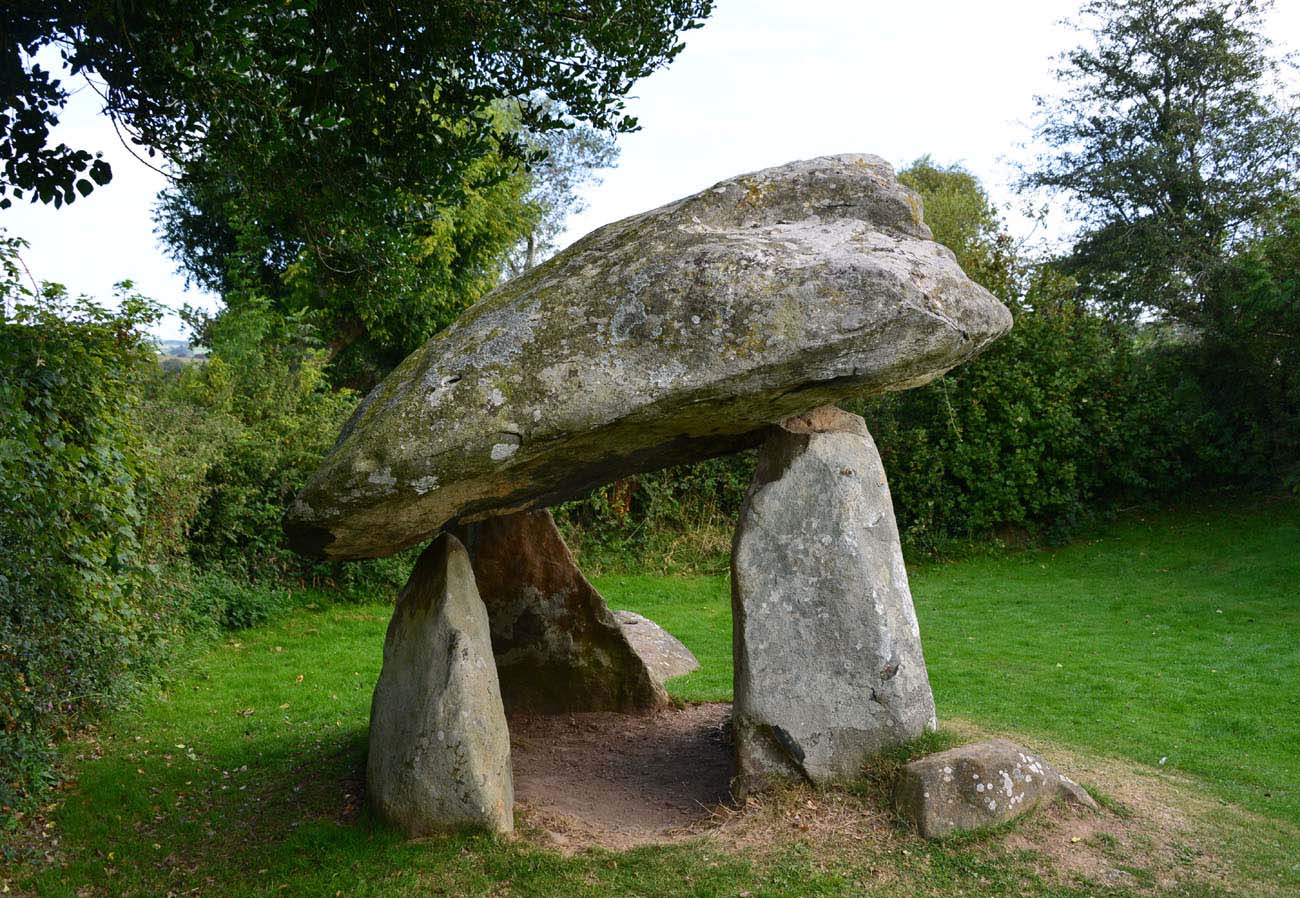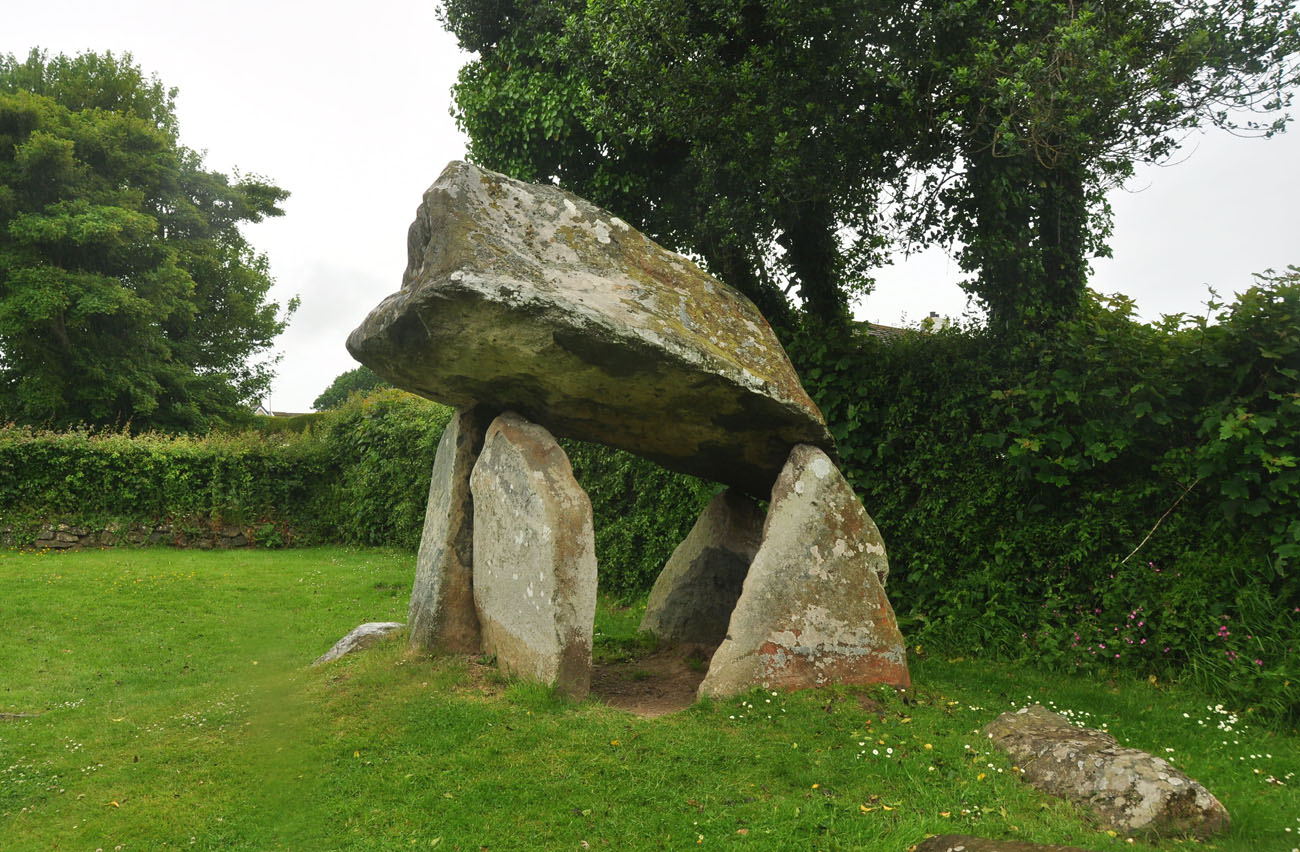History
The Carreg Coetan tomb was erected in the Neolithic period around 3500 B.C., that is in the rather late period of functioning of the megalithic tombs in today’s Wales. Burial chambers were erected and used by local farming communities. The gradual transition of society from gathering and hunting to more settled agricultural life probably influenced the development of a sense of territoriality and rights to inheritance, and thus the desire to pay tribute to ancestors. A visible manifestation of this aspiration could be monumental tombs, also used to carry out religious ceremonies in their vicinity. Used for many centuries, it was possible that they were family tombs or belonging to specific tribes.
Architecture
The core of the Neolithic tomb was a burial chamber consisting of four stones arranged vertically with longer sides, supporting the upper, massive boulder (capstone) 3.2 meters long, 2.7 meters wide and a thickness of about 1 meter, which originally served as the ceiling. The stones have not been processed with tools, but only carefully selected in terms of shape and size. The entrance to the burial chamber was probably located in the fissure on the west or south-eastern side. It was about 1.7 x 1.4 meters and a height of 0.9 to 1.2 meters.
Originally, the entire burial chamber was located under an earth or stone mound (cairn). In plan it was round, with a diameter of about 11 meters and was fenced at the edges with larger boulders, preventing the scattering of smaller material. The height of the mound is unknown, but it was certainly at least 2.5 meters in the central part, as it had to be larger than the burial chamber.
Pots were placed inside the mound, probably serving as cremation urns, because large amounts of charcoal and pieces of cremated bones of adult humans were lying around. They were on a surface, carefully laid out of small pieces of stone slabs. Also, outside the burial chamber, a significant amount of other Neolithic pottery, fragments of an ax, flint knives and scrapers, and several pits of unknown purpose, possibly with ceremonial and religious functions, were found. They were filled with charcoal, and one contained a stone axe.
Current state
The remains of the burial chamber today consist of a dolmen called Carreg Coetan, formed by the four stones supporting the upper capstone. There is only one small section left of the mound (cairn) surrounding the burial chamber, under which there was Neolithic ceramics excavated during the research in 1979 and 1980. The monument is open to visitors.
bibliography:
Castleden R., Neolithic Britain: New Stone Age sites of England, Scotland and Wales, London 1992.
Hilling J., Cilgerran Castle, St Dogmaels Abbey, Pentre Ifan Burial Chamber, Carreg Coetan Burial Chamber, Cardiff 2000.
The Royal Commission on The Ancient and Historical Monuments and Constructions in Wales and Monmouthshire. An Inventory of the Ancient and Historical Monuments in Wales and Monmouthshire, VII County of Pembroke, London 1925.





